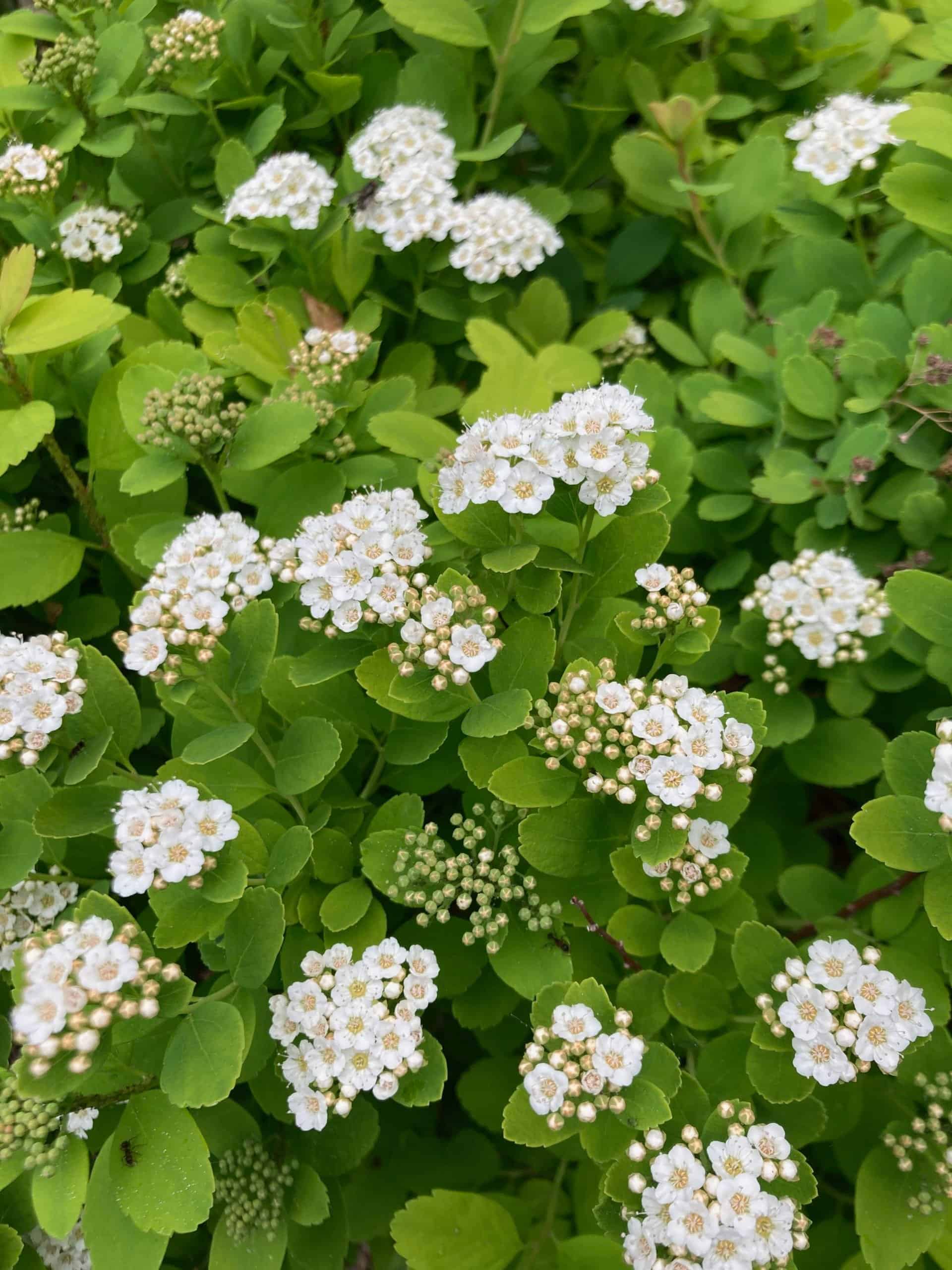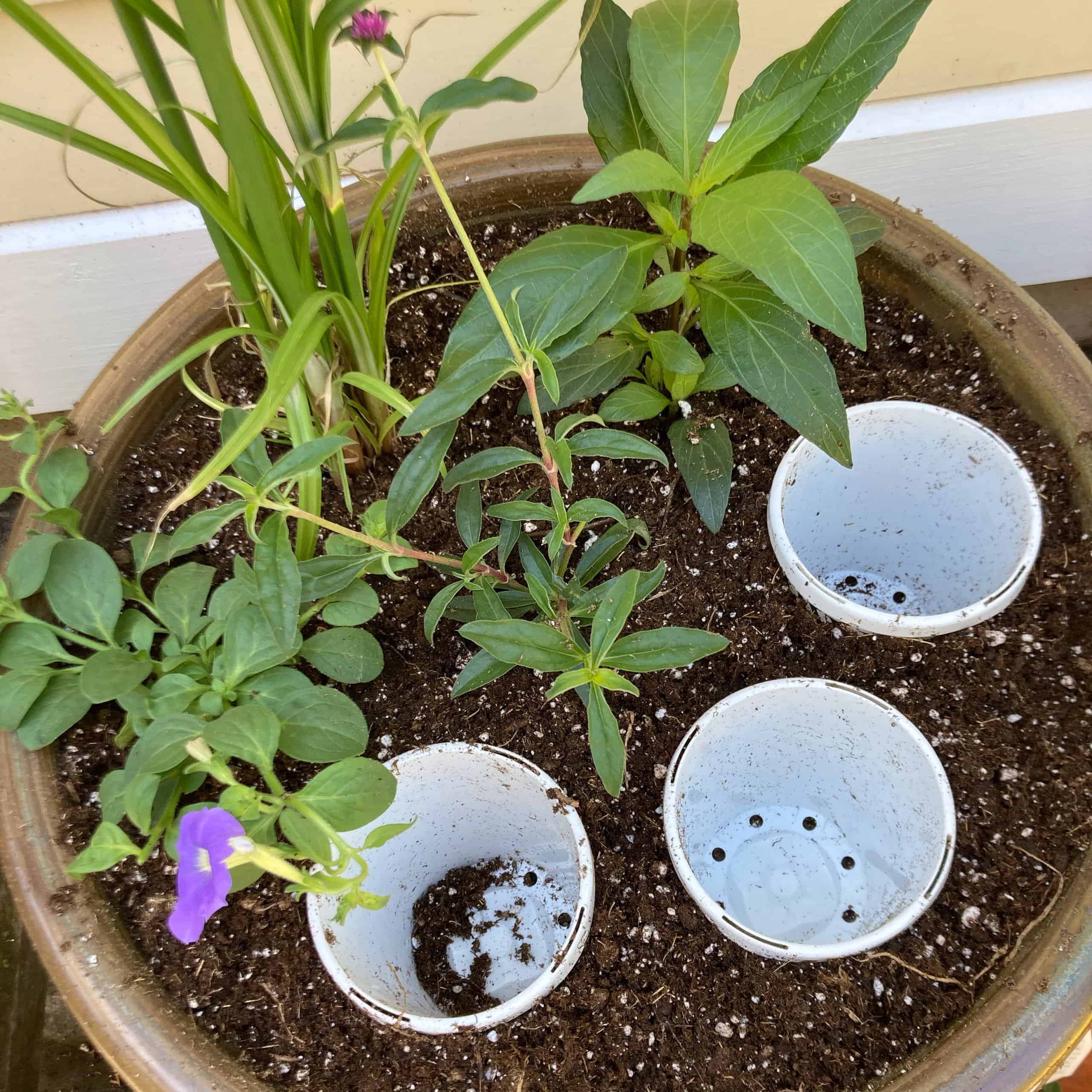I’ve written about spireas in this space before, declaring Spiraea thunbergii ‘Fujino Pink’ to be my favourite, but I’ve changed my mind; Glow Girl birchleaf spirea (S. betulifolia Glow Girl) is my new favourite. After all, if you ask any gardener to name her favourite plant, she’ll name whatever is in bloom at the moment, and Glow Girl is in bloom right now, looking crisp and cool with her sunny yellow leaves and white flowers.

I also grow the aptly named S. nipponica ‘Snowmound’, nearly in bloom, and S. japonica Double Play Gold, the last of my spireas to flower, usually late June. Double Play Gold sports bright gold foliage and hot-pink flowers, not my favourite colour combination in shrubs or perennials, but it does light up a back corner where not much else is going on. Breeders have done a lot with Japanese spireas, introducing several compact and colourful cultivars. “There’s something about spirea” describes the attributes of these recent Japanese spirea introductions.
Often overlooked, hardy spireas are considered ho-hum, probably because they don’t look like much when not in bloom. But they’re good filler shrubs for a wide mixed border and aren’t troubled by pests or fungal problems (at least not in my garden). Unlike many other spring-blooming shrubs, a long season of dainty spirea flowers is possible if you choose different varieties, from the early-blooming Thunbergs to the late Japanese spireas. They’re also easy to prune and benefit from tidying up immediately after blooming. But please, no tight muffin shapes. Most spireas arrange their twiggy branches into graceful, arching vase shapes or loose, low mounds, and you’ll have a better-looking specimen if you honour their inherent growth patterns.
Hardy haskaps
Everyone’s familiar with strawberries, raspberries and blueberries, but what about haskaps? They’re super hardy, early-bearing and loaded with Vitamin C. “Meet the haskaps” talks about these oddly shaped blue fruits and the breeding program at the University of Saskatchewan.
A neat trick for planting large containers
I’ve been planting large containers for eons, but it was only this year I came up with a method to plant several plants easily and efficiently in one container. For example, for a container that will hold eight plants, I insert eight empty pots into the fresh potting soil, spacing them evenly. Once I’ve gently firmed the soil up to the rims of the empty pots, I remove them and pop in the container plants in the ready-made holes. Less mess, too.

Other garden info
• More than 400 plant species, including trees, shrubs, vines, flowers and vegetables, are susceptible to verticillium wilt. Unfortunately, there are no treatments for the fungal disease, but there are ways to prevent or manage it. If you suspect one of your plants is suffering from the wilt or want to learn more about how to prevent it occurring, read “Verticillium wilt: wide-ranging plant pathogen” on Epic Gardening.
• It’s rhubarb season in the garden and in the kitchen. I learned a lot from “18 fun facts about rhubarb” by the Laidback Gardener in Quebec. For example, did you know “rhubarb” means barbarian root and that it belongs to the same plant family as buckwheat, sorrel and knotweed?

I read about Plantskydd in one of your newsletters and also saw the “testimonial” from a lady in Montreal who used it and saved all her tulip bulbs. I was intrigued because I have a problem with rabbits eating everything. I bought a bottle and aside from the smell/colour it seems to be working! Nothing has been touched and I have seen the rabbit hanging around. I came up with an idea to be able to use Plantskydd with my little sprouts so as not to damage them. I used the wooden sticks from ice cream bars, put them in the ground near the seedling plants and soak the sticks with the Plantskydd. So far it’s working. I have recommended this product to a number of people. Finally! Something that works! Thank you.